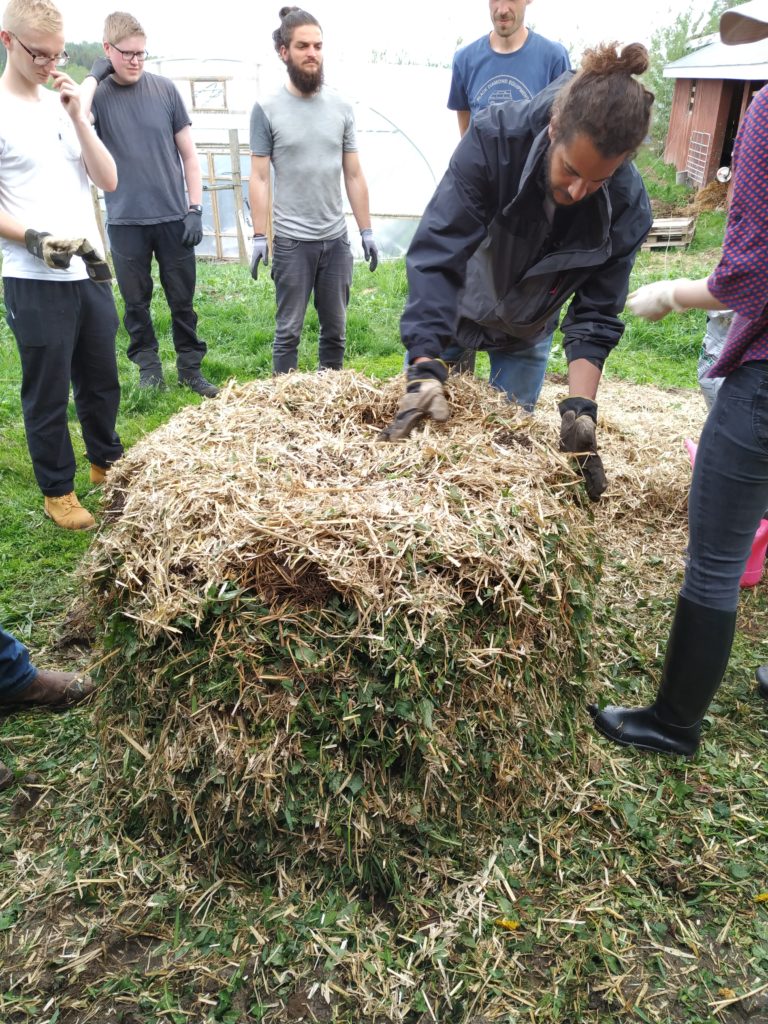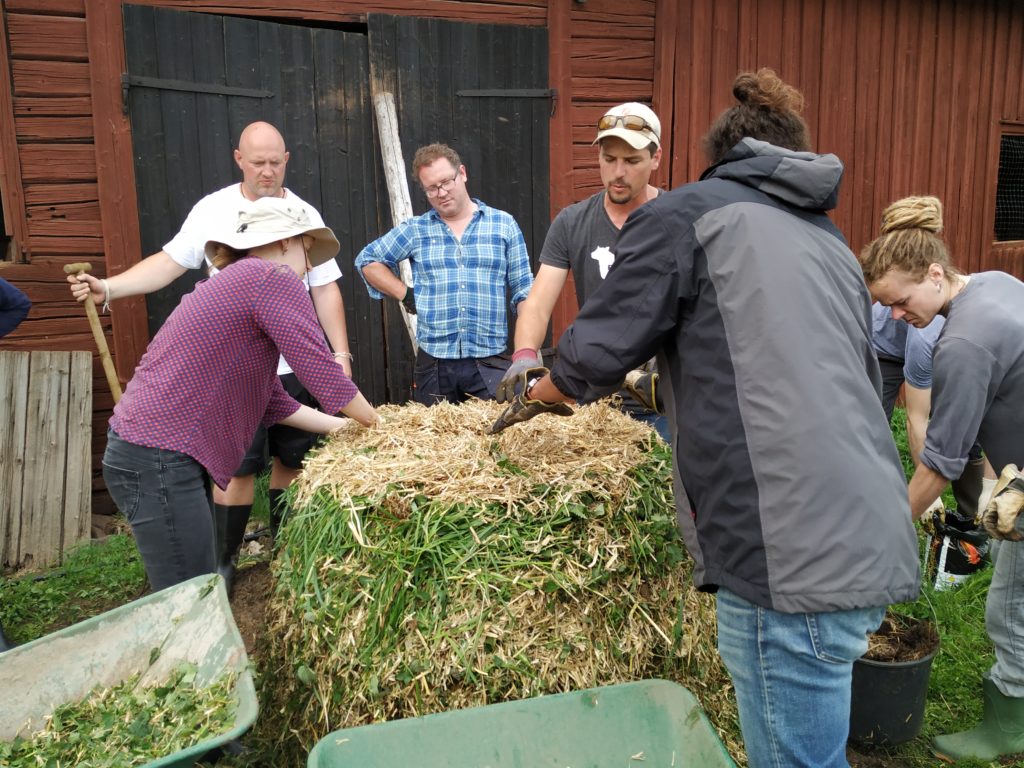This morning I got to help Gustavo with
the chicken and cow moves. We drove up to the eggmobiles at 06:30 and
let out the hens of one egg mobile and had to move the other one onto
fresh pasture. The hens move around every two days following the cows
over the pasture. That way they get to pick out the maggots and
spread the manure from the cows evenly to fertilize the soil.
We
took down the electric fence that surrounds the egg mobile, moved it
over and set it up again after moving the egg mobile with the rhino
(a powerful quad). Then after we let the hens out. It is important to
let them out after moving because otherwise they wont find back into
the egg mobile in the evening.
Then we moved the cows onto fresh grass
and it was incredible to se the difference of just one day of cow mow
machine action. They have four cows here at ridgedale and there will
be a bull coming later in the season so they have four calves this
year. They are kept for pastured beef.
After chores we got breakfast wich
included some incredibly intense smoked ham from last years pigs.
For the rest of the morning I was in
the market garden with Gordon and Rob. This year is the first year
that they have the paperpot transplanter system which is a machine
that is pulled over the beds and transplants into the bed directly.
The plants are started in a paper chain which allows for them to
unravel quickly.
Since the system is new there where still some
things to figure out in order to get efficient and quick with it.
There where some rows where the transplants did not sit in the soil
properly after transplanting and we had to go back and bury them by
hand.
So I helped with that and moving netting from the peas and I
got to test the transplanter aswell.
Since it was still arriving
day for all people from the Permaculture Design course and the
internship I decided to spend the rest of the time with bringing out
woodchips in between the raised beds. That way Rob and Gordon didn’t
have to explain everything to me and then later again and I felt like
I could be helpful.
After lunch Richard arrived with a batch
of 500 day-old chickens around the same time most of the people from
the PDC and Internship arrived aswell. So we got to watch how Richard
settles in the chicks and he explained some key points.
The
essentials are clean, good quality water access, a heat source with
temperatures around 32°C and food.
To encurage the chicks to get
active and run around, the heat lamps are seperate from the water and
food, which will force them out from the heat lamp to scavange for
food and water.
With the others arriving we spread tha
woodchips way faster now and spent some time in the gardens together
before dinner. After dinner we gathered in the training Yurt to get
to know eachothers names and for Richard to give an overview of the
organisational stuff. Everyone also said three things that they where
most interested in and it was fascinating to see so many different
intersts. I am really excited to learn about all the different
projects people have going on.
To end the day there was sauna which
really is one of the best ways to end a day here on the farm.




